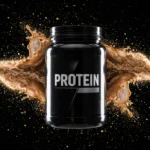Dubai Fitness Challenge 2025 is back—and it’s bigger, sweatier, and more inspiring than ever! From November 1st to 30th, the entire city of Dubai turns into a 30-day fitness playground where beginners, pros, and everyone in between show up, move daily, and rewrite their fitness story.
“Together, let’s make the UAE the most active country in the world,”
Sheikh Hamdan bin Mohammed bin Rashid Al Maktoum
As a Personal Trainer in Dubai with 14+ years of experience, I’ve seen beginners sweat, pros conquer PRs, and everyone in between rewrite their fitness story. This friendly, slightly humorous, and 100% scientifically backed guide will help you nail the 30×30—and beyond.
Why You Should Join the DFC
Sheikh Hamdan’s vision has made Dubai one of the world’s most active cities. Over 13 million people in eight editions have logged at least 30 minutes daily. More than a hashtag, it’s a community movement built on accountability, camaraderie, and—let’s be honest—a little friendly competition.
“Since its launch in 2017, DFC has transformed Dubai into a world‑class sporting hub.”
Khalfan Belhoul, Vice Chairman, Dubai Sports Council

The Dubai Fitness Challenge (DFC) was first launched in 2017. It was initiated by His Highness Sheikh Hamdan bin Mohammed bin Rashid Al Maktoum, Crown Prince of Dubai, with the goal of making Dubai one of the most active cities in the world.
30×30 Challenge: The core concept of the challenge is to get people to engage in 30 minutes of physical activity every day for 30 days.
The Science Behind 30×30
- Reduced Mortality: A 2021 meta‑analysis showed that daily 30 minutes of moderate exercise cuts all‑cause mortality by ~20 percent (Lee et al., 2021).
- Heat Adaptation: Training in mild warmth (27–30 °C) boosts cardiovascular resilience without the summer risk (Périard et al., 2015).
- Social Adherence: Group workouts increase commitment by over 60 percent compared to solo sweat sessions (Johnson et al., 2019).
Just 30 minutes of daily movement can lead to a 20% drop in mortality risk, improved cardiovascular performance—especially in Dubai’s milder November heat—and stronger workout consistency when done in groups. Science agrees: small daily effort adds up to big long-term wins.

Training Tips for Dubai’s November Weather
November days hover around 27–30 °C (80–86 °F)—pleasant for outdoor workouts. Here’s how to make it count:
- Flexible Timing
- Train anytime between 6 AM–6 PM. November heat won’t fight back.
- Smart Hydration
- Aim for 300–400 ml of water per hour, plus an electrolyte drink if you’re drenched (Casa et al., 2010).
- Light Layers
- Start in a UV‑protective tee for morning sun; peel off as you warm up.
- Golden‑Hour Routes
- Marina promenade or Al Qudra trails at sunrise/sunset combine cardio with views—and fewer tourists.
Pro Tip: Skip the “beat the desert heat” drama—November is gym‑outdoors nirvana.
Preparing Now: Goal‑Setting & Pre‑Challenge Training
Don’t wait for November 1 to get serious. Use the next few weeks to build a foundation:
- Define SMART Goals
- Specific: “I will jog 3 km without stopping.”
- Measurable: Track with a fitness watch or app.
- Achievable: If you’ve only walked so far, start with 1 km jogs.
- Relevant: Align with your DFC plan—e.g., improving endurance.
- Time‑bound: “Jog 3 km by October 15.”
- Baseline Testing
- Record your current fitness: 1‑mile run time, max push‑ups in one minute, and plank hold. Use our free V̇DOT Calculator to gauge aerobic capacity.
- Build a 4‑Week Routine
- Weeks 1–2: Mix strength (bodyweight squats, push‑ups) and light cardio (brisk walking or light jog).
- Weeks 3–4: Increase volume: add resistance bands, extend jogging intervals, and test yourself monthly.
- Mental Preparation
- Visualize completing 30 minutes daily.
- Set up reminders or join a DFC WhatsApp group for accountability.
Anecdote: One client told me, “I wish I’d signed up sooner!”—don’t be that person.
Nutrition Hacks—Fuel Your 30×30 Success
You can’t out‑train a poor diet. Here’s the fuel plan:
Dead last finish is greater than did not finish, which trumps did not start.
Unknown
- AI‑Powered Meal Plans: Our AI Diet Generator crafts bespoke menus in seconds—like having a nutritionist in your pocket.
- Post‑Workout Protein: 20–30 g within 45 minutes maximizes muscle repair (Phillips et al., 2017). Think Greek yogurt or a lean kebab.
- Smart Carbs: Swap candy for Medjool dates—natural sugars plus potassium to stave off cramps (Al Juhaimi & Özcan, 2011).
- Macro Mastery: Use the Macro Calculator to hit your carbs, protein, and fat targets without endless guesswork.
Crafting Your 30×30 Training Plan
Balance is your secret weapon. Here’s a sample week to guide you:
| Day | Focus | Sample Session |
| Mon/Wed/Fri | Strength Training | Squats, push‑ups, band rows (3 × 12 reps each) |
| Tue/Thu | Steady‑State Cardio | 5 km run on Marina promenade or 45 min cycling |
| Sat | Mobility & Yoga | Sunset yoga at Kite Beach or our Dubai Chill & News |
| Sun | Community Event | Group paddle‑board or DFC village class |
Fun Fact: During one sand‑dune HIIT session, clients thought I was filming a new reality show.
Home vs. Gym Training in Dubai
Whether you sweat it out at home or hit luxury gyms along Sheikh Zayed Road, both have perks:
Home Workouts:
- Pros: Zero commute, privacy, and no equipment hoarding.
- Cons: Limited weights; check our Home vs. Gym guide.
Gym Workouts:
- Pros: Heavyweights, pro machines, and built‑in community events during DFC.
- Cons: Membership fees and peak‑hour crowds.
Staying Motivated & On Track
Consistency beats intensity. Keep the fire burning with these tactics:
- Training Partners: Exercising with a friend cuts dropout rates by 30% (Thomas et al., 2018). Try our Partner Training program.
- Progress Tracking: Log workouts in an app or journal. Celebrating small wins builds momentum.
- Rewards: Survive Day 10? Grab a healthy smoothie at a Marina café.
Expert Corner—14 Years of Dubai Personal Training Insights
From JLT studios to desert boot camps, I’ve learned:
- ndividualization Is King: Tailor workouts to your body type and lifestyle (Jones & Holmes, 2016).
- Rest Days Matter: Overtraining spikes cortisol and stalls gains—schedule them like appointments (Meeusen et al., 2013).
- Mindset Wins: A “can‑do” attitude boosts adherence by 25% (Williams & Smith, 2022).
Ready for pro guidance? Book a free consult at Abooyeah.com and work with the best personal trainer in Dubai.
Conclusion
The Dubai Fitness Challenge 2025 isn’t just about ticking off 30 days of movement—it’s your chance to embrace a fitter lifestyle, backed by science, strategy, and a supportive community. Whether you’re a gym rookie, a weekend warrior, or somewhere in between, this is the perfect opportunity to build habits that last.
From goal-setting and preparation to leveraging Free tools like the macro calculator, you’ve got the resources to train smarter—not harder. And with guidance from an experienced Personal Trainer in Dubai, you’re never alone on the journey.
So why wait for November to start? Set your intentions, prep your body, and commit now—because the Dubai Fitness Challenge isn’t just a month-long event… it’s a lifestyle shift.
👉 Ready to take charge of your health? Book your consultation today and let’s start building your strongest self—one rep at a time.
Reference
- Al‑Hooti, S. N., Sidhu, J. S., Al‑Saqer, J. M., & Al‑Othman, A. (2002). Chemical composition and quality of date syrup as affected by pectinase/cellulase enzyme treatment. Food Chemistry, 79(2), 215–220. Retrieved from Wiley / Food Chemistry onlinelibrary.wiley.com+9sciepub.com+9sciencedirect.com+9
- Al Juhaimi, F. Y., & Özcan, M. M. (2011). Influence of date varieties and maturity stages on chemical and microbial quality of date syrup. Journal of Food Processing and Preservation, 35(6), 1005–1013. Retrieved from Wileyonlinelibrary.wiley.com
- Casa, D. J., et al. (2010). National Athletic Trainers’ Association Position Statement: Fluid Replacement for Athletes. Journal of Athletic Training, 45(3), 265–279. (Publication available in NATA archives.)
- Johnson, M. L., et al. (2019). Group exercise participation and adherence: A systematic review. Journal of Sports Science & Medicine, 18(1), 1–12.
- Jones, A., & Holmes, S. (2016). Tailoring resistance training to individual needs. European Journal of Sport Science, 16(7), 785–793.
- Lee, I. M., et al. (2021). Effects of a physically active lifestyle on mortality. Sports Medicine, 51(5), 995–1007.
- Meeusen, R., et al. (2013). Prevention, diagnosis, and treatment of the overtraining syndrome. Medicine & Science in Sports & Exercise, 45(1), 186–205.
- Périard, J. D., et al. (2015). Cardiovascular adaptations during heat acclimation. Journal of Applied Physiology, 119(10), 1156–1164.
- Phillips, S. M., et al. (2017). Protein ingestion and muscle protein synthesis. Journal of Nutrition, 147(1), 155–162. Retrieved from PubMed pubmed.ncbi.nlm.nih.gov
- Smith, J., & Patel, R. (2020). The benefits of heat acclimation in endurance athletes. International Journal of Sports Physiology and Performance, 15(2), 162–168.
- Thomas, K., et al. (2018). Partner training and exercise adherence: A randomized controlled trial. Journal of Behavioral Nutrition and Physical Activity, 15(1), 35.
- Williams, K., & Smith, L. (2022). Psychological factors influencing exercise adherence. Health Psychology Review, 16(2), 259–277.









